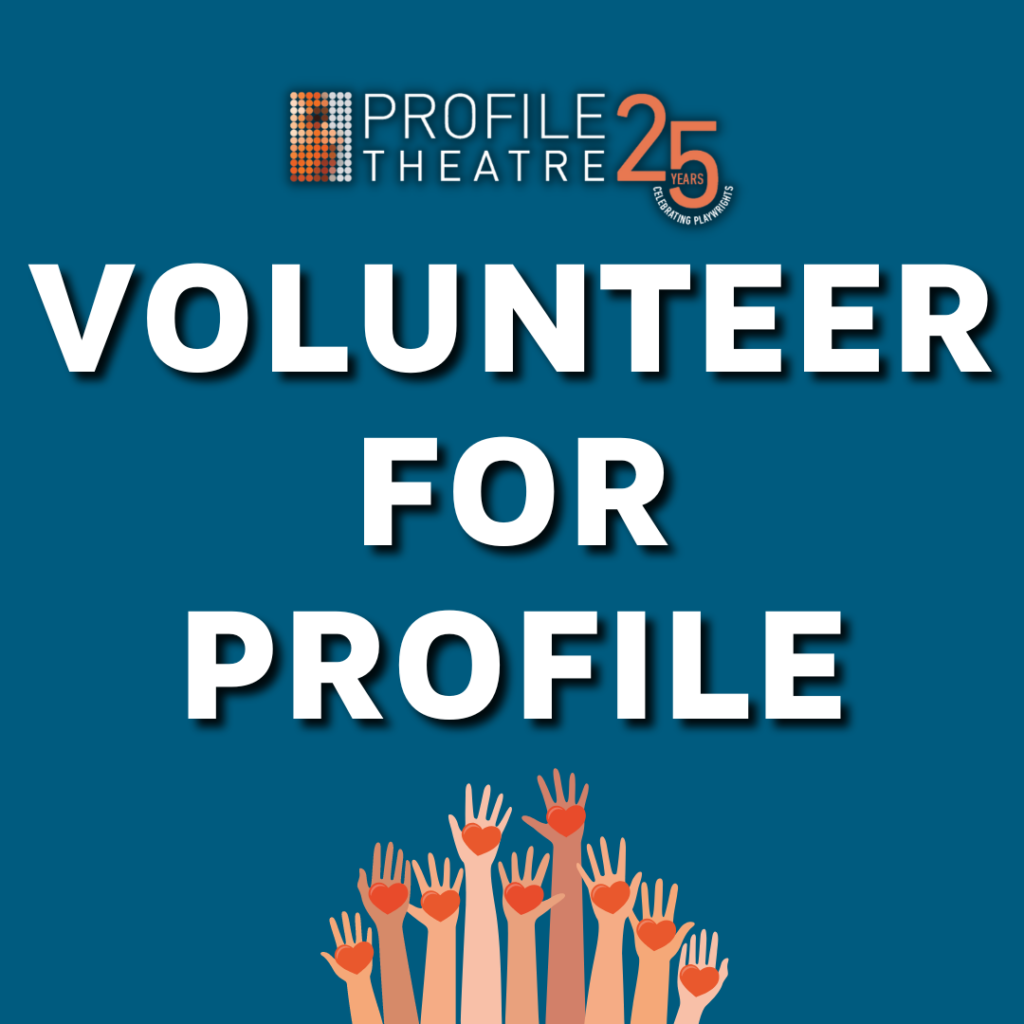 Profile Theatre is proud to be partnering with Blacque Butterfly Presents on the In Dialogue Main Stage events for The Antigone Project: A Play in Five Parts. We have collaborated to feature a series of local spoken-word artists performing in our lobby prior to each performance of the production. Mirroring the collection of diverse voices embodied in Antigone Project, the artists are from varied backgrounds, experiences and perspectives, all of which come to bear on the profound and provocative work that they will be sharing with our audiences.
Profile Theatre is proud to be partnering with Blacque Butterfly Presents on the In Dialogue Main Stage events for The Antigone Project: A Play in Five Parts. We have collaborated to feature a series of local spoken-word artists performing in our lobby prior to each performance of the production. Mirroring the collection of diverse voices embodied in Antigone Project, the artists are from varied backgrounds, experiences and perspectives, all of which come to bear on the profound and provocative work that they will be sharing with our audiences.
To find out more about Antigone Project, click here.
To see past In Dialogue Events, click here.
Wednesday, September 7th:
Angela Davise | 6:55pm
Thursday, September 8th:
ShaRhonda McCauley | 6:55pm
Friday, September 9th:
Nafisaria Scroggins-thomas and Akela Jaffi | 6:55pm
Saturday, September 10th Matinee:
GG Warren and Anayla Warren-Premsingh** | 1:25pm
Saturday, September 10th Evening:
Habiba Addo | 6:55pm
Sunday, September 11th:
Wilma Alcock and Blacque Butterfly** | 1:25pm
(**): Mother-Daughter Pairing
Additionally, as part of our year-long collaboration with Geezer Gallery, we will be displaying the work of Farooq Hassan in our lobby for the duration of this production. Mr. Hassan’s varied exploration of the female form and the female psyche reflect the versatility of expression embodied in The Antigone Project.
Artist Bios:
Habiba Addo is a native of Ghana, West Africa. She holds a degree in Theater and a Certificate of Dance from Portland State University. She has performed and taught in the United States and internationally for over fifteen years. She teaches and performs dance, rhythm and stories from Ghana, Guinea, Gambia and Senegal. She also shares the rich African cultures present today in Cuba and Brazil. A guest teacher and performer for Portland Public Schools for over fifteen years, Habiba has also performed and taught the community in dance, storytelling and theater through organizations such as Young Audiences, White Bird, Oregon Ballet Theater, Interstate Firehouse Cultural Center, Tygres Heart Shakespeare Company, Mambo Queens, Northwest Afrikan American Ballet, Montessori Schools, Cedarwood Woldorf School, Oregon Episcopal School, Miracle Theater, Milagro Bailadores and Portland State University’s World Dance Office. She is a recipient of the Lila Jewel award (2000), an Arts Alive grant (2000) and multiple technical assistant grants from Regional Arts and Culture Council (1998, 2002 and 2012).
Wilma Alcock – Wilma has written poetry as a Write around Portland participant and spokesperson. She was also featured in Give!Guide and the voice of the Portland Harbor River clean project and she is also a freedom writer.
Akela Auer “Akela Jaffi” is a Portland native. She has been performing since she was small because it’s in her bloodline and because she knows nothing else. While her craft is made up of many different mediums, dance has been her main boo for over a decade. She recognizes the power movement has to open up the darkest doors of the self and inspire others to seek within for guidance. She intends to always dance as a form of prayer and healing.
Darlene Solomon “Blacque Butterfly – Blacque Butterfly is an entertainer. Her love for the arts has allowed her to explore several layers of her calling. Be it spoken word, motivational speaking, singing, dancing, theater or event promoting she has allowed the Creator to use her ministry to inspire others to follow their calling. Darlene is a native Oregonian, born and raised in NE Portland she has released and published a chapbook entitled “Black girl can I comb your hair” and a spoken word CD entitled Collide -A – Scope (Where life, love and grace collide.) She is currently in the studio working on her sophomore project. She is featured on a variety of collaborative projects.
Angela Davise, Georgia born, California Grown, Portland Grounded, started her journey with musical expression several years ago. From the time she was a child she searched for outlets to release the emotional depth of her heart through the expression of, poetry, art, and dance. The music of Angela Davise evokes an emotional response to the deepest of secret cries within the heart. The total abandonment to the world of listeners to be completely transparent in songwriting paints a very clear picture of struggle and survival, sadness and joy, defeat overcome by victorious cries of an unrelenting hope.
Farooq Hassan spent his youth in crowded cafes and on the docks in Iraq, striving to capture on paper the colorful scenes playing out before his eyes. As a young man, he taught high school. “We did our best to create art, not politics,” Hassan recalls. For 50 years he built his standing as an artist. His work was exhibited in London, Amman, Basrah, and Baghdad. In Iraq, he was considered a national treasure.
Then, politics changed his life forever. Between 1980 and 1991 Hassan moved 22 times, always one step ahead of political strife in Bagdad. Life in Iraq was especially perilous. In 2010, Hassan and his wife, Haifa, joined their daughter in Portland. Hassan was 71 years old and he had lost everything: his reputation as a master artist, the paintings he had created in Iraq, and his home. So, he set about renewing himself through painting.
ShaRhonda “Rose City MissChief” McCauley is a spoken word and hip-hop performance and recording artist. The rapoet most recently self-published and released her first anthology of poetry called Rhyme Scheme: Power Edition Volume 1. The Portland, OR native has performed at many community events, schools, and local concerts as a soloist and as a group as one of the original members of the hip-hop trio Rose Bent. She recorded two projects with the group and also a limited play spoken word album and mixtape as a soloist. She has collaborated with many other local talents and has had opportunities to showcase her talents in other regions as well.
Sherrie Warren “GG Warren” – GG Warren is a writer, photographer, bass player, jewelry designer, licensed massage therapist, and proud mother. Her writing stems from emotions, and situations she has personally experienced, or what she would like to experience. Love, loss, tragedy, loneliness, triumph, and undefinable happiness are all her inspirations.
Anayla Warren-Premsingh – Anayla Warren-Premsingh is 18 years old and just graduated from Jefferson high school. She will be attending the University of Oregon in the fall. Her major is undeclared, but she’s looking into getting into international studies and minoring business, or possibly, majoring in human physiology. She started writing “creatively” when she could string words together in a sentence on a piece of paper. She writes poetry and short (and maybe one day) long, stories.
Save
Save
Save


















 Profile Theatre is proud to be partnering with
Profile Theatre is proud to be partnering with 
 I don’t know about you, but I love history. Sit me down in front of The History Channel with some popcorn and several hours and suddenly you have a very happy person.
I don’t know about you, but I love history. Sit me down in front of The History Channel with some popcorn and several hours and suddenly you have a very happy person. 



